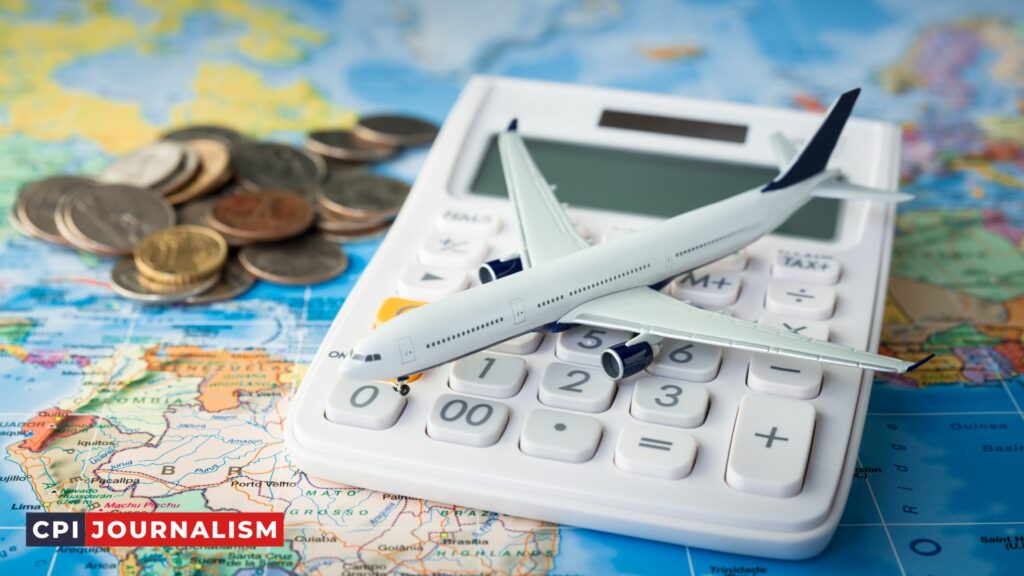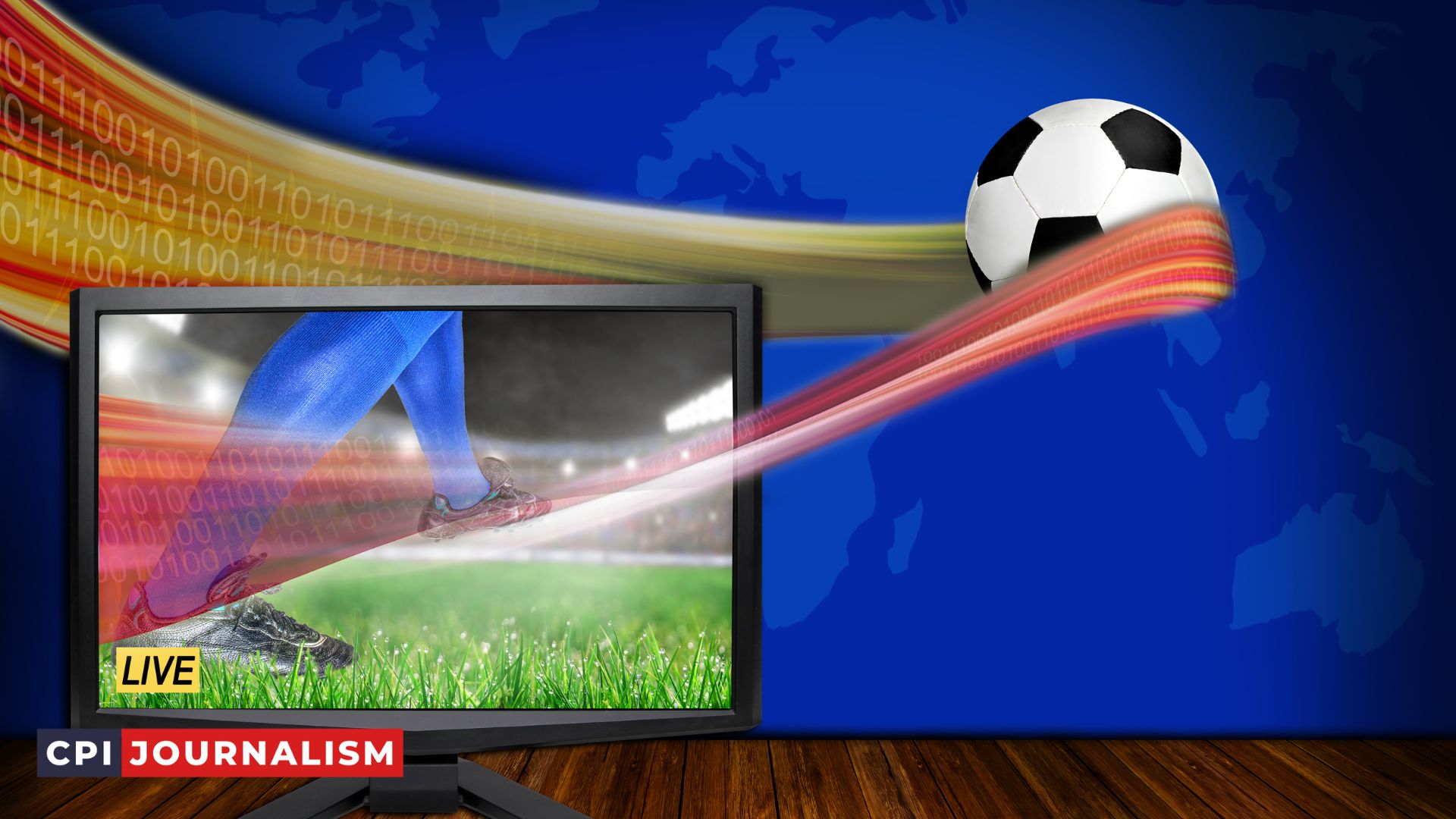What Are The Challenges Of Covering Sports Vents Live?
As an experienced journalist, I have been fortunate enough to cover a variety of live sports events. While these events can be thrilling, they also present unique challenges that must be managed to ensure a successful broadcast.
In this article, I will discuss the common challenges that come with covering a live sports event and how to approach them.
I will also provide advice on how to best prepare for and execute a live broadcast in order to ensure a successful outcome.
A. Definition Of “Covering Sports Events Live
B. Overview of Challenges
Covering live sports events can be incredibly challenging for any journalist. Here are some of the most common challenges that you may face:
1. Time Constraints: When covering sports events, you often have strict deadlines and time constraints. This can make it difficult to get all the necessary information about the event in a timely fashion. Furthermore, you may need to make quick decisions in order to keep up with the event.
2. Accessibility: Depending on the sport or event, you may have limited access to certain aspects of the game. This can make it difficult to get the information that you need to accurately report on the event.
3. Technical Difficulties: Technology used to cover sports events can be incredibly complex and it can be difficult to keep up with the latest advancements.
Additionally, you may encounter technical difficulties during the event which can slow you down and make it difficult to get the story out in a timely manner.
4. Coordination: When covering sports events, you may need to coordinate with multiple people, from the athletes to the coaches to the media team. This can be a challenge in itself, as you must ensure that everyone is on the same page in order to get the story out.
5. Competition: There is often a lot of competition among journalists when covering sports events, as everyone is trying to get the most interesting and unique angle on the story. This can be incredibly challenging, as you must be creative in order to stand out from the crowd.
Overall, covering live sports events can be incredibly challenging. It is important to be prepared and have a plan in place before you go into the event. Additionally, it is important to have a good understanding of the sport or event and the tools necessary to cover it.
With the right preparation, you can successfully cover any live sports event.
Challenges Of Covering Sports Events Live
A. Technical Challenges
Covering sports events live is a challenging and demanding task for any journalist. There are a range of technical difficulties which can arise, and understanding and overcoming these is key to delivering a successful piece.
One of the most difficult and time-consuming aspects of live sports reporting is setting up the necessary technical equipment. Depending on the size and scope of the event, the equipment required can vary significantly.
For example, a live event in a large stadium may require multiple cameras, audio equipment and other specialized equipment, all of which needs to be set up, tested and configured correctly.
This can be a laborious and time-consuming process, and any mistakes or oversights can have significant impact on the quality of the live broadcast.
Another technical challenge associated with live sports reporting is the need to be able to capture and transmit high-quality video and audio in real time. This requires a reliable network connection and the right hardware, both of which can be difficult to secure in some locations.
In addition, the audio and video equipment used needs to be of the highest quality, as any distortion or noise can significantly reduce the broadcast quality.
Finally, live sports reporting requires journalists to be able to quickly and efficiently edit their footage in real-time. This is a difficult skill to master, as it requires a deep knowledge of editing software and a highly developed sense of timing and flow.
Furthermore, the pressure of being live can make even the most experienced editors make mistakes and overlook important details.
By understanding and anticipating the technical challenges associated with live sports reporting, journalists can ensure that their broadcasts are of the highest quality.
1. Equipment
As an experienced journalist, I cannot emphasize enough the importance of having the proper equipment when covering sports events live. Having the right gear is essential to ensuring that you can capture all the action and deliver the best coverage for your audience.
One of the most important pieces of gear is a good camera. You need one that captures high-quality video and takes clear photographs.
If you are shooting video, you will also need a good microphone and a fluid head tripod to ensure that your videos are steady and not shaky. Additionally, you will need a laptop or computer with a good editing software.
It is also important to have additional lighting, such as portable LED lights, to help light up the space, especially if you are shooting indoors. Additionally, having a good audio recorder and a spare battery for your camera is always a good idea.
Finally, depending on the type of sports event, you may need additional equipment such as a telephoto lens or a longer lens. This will help you capture the action at a distance.
By having the right equipment, you will be able to deliver the best coverage of any sports event. It will also help ensure that you capture all the action and provide the most engaging content for your audience.
2. Connectivity
Covering sports events live presents a special challenge when it comes to connectivity. For one thing, the field of play may be quite large, and there may be a need to move around to different parts of the field in order to capture the action.
This means that the journalist must be sure that the area has reliable and fast internet coverage. In this regard, it may be necessary to purchase a dedicated hotspot or router to ensure that the journalist is able to stay connected and upload their work in real-time.
In addition, the journalist must be sure that their equipment is up to date and able to handle the demands of live coverage. This means that they should ensure that their laptop or other device has sufficient storage, memory, and processing power to handle the demands of the task.

They should also be sure to have the necessary software and programs installed in order to be able to process and transmit the footage as quickly as possible.
Finally, the journalist should be sure to have the necessary communication equipment on hand. This includes a microphone, headphones, and other communication devices that can help them stay in touch with their team and their audience.
This is especially important when it comes to covering events where the action is unfolding quickly and the journalist needs to be able to relay updates and information quickly.
By taking the time to ensure that their connectivity and equipment are up to date and ready to go, journalists will be able to ensure that they can cover sports events live without too much hassle or headaches.
3. Power
Power is a major challenge for sports event journalists. Many sporting events are held in outdoor venues or in stadiums that don’t have reliable or consistent access to power sources.
It is essential for journalists to have a reliable source of power so they can run their equipment and charge their devices. Without access to power, journalists may be unable to capture the best images or audio while they are on location.
In order to ensure that journalists have access to power, they should bring multiple charging sources with them. This could include a combination of a battery powerbank, a generator, and extra batteries.
Journalists should also be prepared with an extension cord or two and surge protectors. It is also a good idea to bring spare power cords for each device so that you can easily switch out cords if one stops working.
Finally, it is important to be aware of the weather conditions and to plan ahead. If there is a chance of rain or other inclement weather, journalists should be prepared with waterproof cases for their cameras and devices.
It is also wise to bring a tent or canopy to protect equipment from the elements.
By being prepared and having a backup plan for power sources, journalists can ensure that they are able to capture the best images and audio from their sports event coverage.
B. Logistical Challenges
1. Access
Covering sports events live can present a number of challenges for journalists and reporters. One of the most significant of these is access. Depending on the event, gaining access to the players, coaches, and field of play can be difficult or even impossible.
In some cases, media access may be restricted due to security or privacy concerns, or access may be limited due to contractual obligations.
Additionally, a journalist may be required to have special credentials or a press pass in order to gain access to a given event.
It is important for journalists to be aware of the specific requirements for access and to plan ahead in order to ensure that they are able to gain entry to the event.
For example, journalists should research the event in advance to determine any necessary credentials or passes, and should make sure to arrive at the event in plenty of time to go through any necessary security or check-in procedures.
Additionally, journalists should be sure to bring any necessary equipment, such as cameras or recording devices, and should familiarize themselves with any relevant restrictions on the type or amount of equipment that is allowed.
Gaining access to the event is only the first step in covering a sports event live. Journalists must also be prepared to react quickly to any changes in the situation and to take advantage of any available opportunities to collect information.
It is important to be ready to adjust to the rapidly changing circumstances of the event, as well as to any restrictions or requirements regarding access. By staying aware and prepared, journalists can ensure that they are able to successfully cover the event and get the information they need.
2. Transportation
Covering a sports event live can present some unique challenges to journalists, especially when it comes to transportation. Depending on the event, there may be limited access to the venue or difficult terrain to traverse.
Additionally, there may be a need to move quickly between different locations, particularly when covering a multi-day event or multiple venues.
First and foremost, when it comes to transportation for live sports coverage, planning is key. Journalists should plan ahead and research the best routes to and from the venue.
This includes researching potential detours, road closures and construction, as well as any parking restrictions or alternate transportation options.
It is also important to consider how much time it will take to get to and from the event and factor in any delays due to traffic, weather or other unforeseen circumstances.
In addition to planning ahead, journalists should also consider the use of rental vehicles. This can be more cost-effective than relying on public transportation or taxis, and can also provide more flexibility in the event of delays or changes in plans.
Furthermore, journalists should also consider carpooling with other colleagues, as this can help to reduce costs and travel time.
Finally, journalists should also be aware of any safety concerns that may arise when travelling to and from the event. This includes being aware of the local environment, such as the presence of wildlife, and ensuring that the vehicle is in good working order before setting off.
Additionally, journalists should also consider their own safety and ensure that they have the necessary supplies and equipment to handle any situation that may arise.
3. Accommodation
One of the major challenges of covering sports events live is finding suitable accommodation. Depending on the location of the event, you may have to travel long distances to get there, and in some cases, you may not be able to find a hotel nearby.
As such, you need to plan ahead and book your accommodation well in advance.
Not all sports events are held in major cities, so you may be required to stay in smaller towns or find AirBnB accommodation. This can be difficult, especially when you’re on a tight budget.
Moreover, if you’re travelling alone, you may need to find a shared accommodation option, which can be quite challenging.
Another issue to consider is the fact that you may have to travel and stay in a different location every day, depending on the event and the travel time. This can make it difficult to find accommodation, as you may not have enough time to book something in advance.
In such cases, you may need to be prepared to be flexible and make alternative arrangements.
Finally, you should also consider the cost of accommodation when planning for your trip. While some events may be sponsored or have accommodations provided, others may not.
In such cases, you may need to factor in the additional costs of accommodation when budgeting for the trip.
Overall, finding suitable accommodation is a major challenge for journalists covering sports events live. It is important to plan ahead and be prepared for any eventuality.
C. Financial Challenges
Covering sports events live can be a costly endeavor for any journalist. Live coverage often involves the use of sophisticated equipment and technology, such as cameras, video editing suites, and audio equipment.
This can be a significant expense for any news organization, and it can be a challenge to secure enough funding to cover the cost of these items.
In addition to equipment costs, there is also the cost of travel, food and lodging for the journalists covering the event. This can add up quickly, especially if the sports event takes place in a distant location.
It is important for journalists to plan carefully in order to keep costs as low as possible.
Organizations that are responsible for putting on sports events, such as professional sports leagues, often provide grants to news organizations to help cover some of these costs.
However, the availability of these grants can vary widely, and they may not always be sufficient to cover all of the costs associated with live coverage.
Finally, it is important to remember that live coverage of sports events can also be a time-consuming process. Journalists may need to spend many hours preparing for and covering the event, and this can take a toll on their regular workload.
This is especially true for smaller news organizations that may not have the resources to devote to a large-scale live coverage project.
1. Cost of Equipment
Covering a sports event live is a challenging task that requires access to the proper equipment. As an experienced journalist, I can assure you that the cost of equipment is a major challenge when it comes to covering sports events live.
The equipment needed for live sports coverage can be expensive and may require a significant investment. A basic setup for covering a sports event live may include a high-definition camera, a tripod, audio equipment, a laptop or tablet, and software for streaming.
Depending on the level of the event, additional equipment may be required, such as additional cameras, lights, and even a live production truck.
The cost of the equipment needed to cover a sports event live can range from a few thousand dollars to hundreds of thousands of dollars. A production truck may cost over a million dollars.
Therefore, it is important to consider the cost of equipment when planning to cover a sports event live.
Fortunately, there are a variety of options available to help offset the cost of equipment. For example, renting or leasing equipment can be a great way to save money. You may also be able to find sponsors or partners to help cover the cost of equipment.
In conclusion, the cost of equipment is a major challenge when it comes to covering a sports event live. It is important to consider the cost of equipment and take advantage of available options to help offset the cost.
2. Cost Of Travel
Traveling to cover sports events can be a costly endeavor, especially if the event is in a different city or country. The cost of transportation, accommodations, and meals can add up quickly.
Additionally, the cost of equipment, such as cameras and laptops, can be expensive and must be factored into the budget.
For smaller-scale events, it may be possible to get access to a media vehicle, which can help reduce the costs associated with travel. If not, it is important to plan ahead and book flights and hotels in advance to take advantage of discounts.
Furthermore, when planning, be sure to factor in time for rest and relaxation, so that you are not exhausted when it comes time to cover the event.
Another cost consideration when it comes to covering sports events is the cost of tickets. Depending on the event, tickets for journalists can be expensive and hard to come by.

If tickets are hard to come by, it is important to reach out to the media contact for the event to see if a media pass can be obtained.
Lastly, if the event is in a foreign country, it is important to consider the cost of any necessary visas. Visas can be costly and require a significant amount of paperwork, and must be obtained in advance in order to travel.
Covering sports events live can be a rewarding experience, but it is important to consider the associated costs before embarking on an assignment.
By planning ahead and budgeting appropriately, it is possible to cover events without breaking the bank.
3. Cost of Accommodation
Covering a sporting event live can be very expensive, especially when it comes to accommodation. Depending on the event, accommodation can range from relatively affordable to very expensive.
When covering a large-scale event, such as the Olympic Games, World Cup, or a major international competition, the cost of accommodation can be quite high.
This is due to the fact that large-scale events attract a great deal of visitors, and thus the cost of accommodation is often increased to accommodate the influx of visitors.
In addition to the standard accommodation costs, one must also consider the cost of transportation to and from the event, as well as the cost of food and drink.
It is important to remember that the cost of accommodation should be taken into consideration when deciding how much money to budget for a live sporting event.
For those who are covering events on a more regular basis, such as journalists, it is important to consider the long-term cost of accommodation.
If you are covering a particular event for an extended period of time, it is important to consider the cost of a hotel or other type of accommodation for the duration of your stay. This will help to ensure that you stay within your budget and that you receive the best value for your money.
Finally, it is important to remember that the cost of accommodation can vary greatly depending on the type of event and the location. Therefore, it is important to research the cost of accommodation before deciding to cover a particular event live.
This will help to ensure that you are able to cover the event without breaking the bank.
D. Time Management Challenges
Time management is one of the most crucial challenges of covering sports events live. As a journalist, you must be able to manage your time effectively to ensure that you are able to cover the event in its entirety.
This requires you to plan your coverage in advance, so that you can make the most of your limited time.
Time management is especially important when it comes to covering sports events involving multiple teams and venues. You must be able to prioritize the events you wish to cover, and allocate your time accordingly.
You should also be aware of any time constraints that may be imposed by the event’s organizers.
In addition, you must be able to juggle multiple tasks while on assignment. This includes interviewing players, taking photographs, and writing stories, all while trying to capture the excitement and energy of the event.
You should also be prepared for unexpected occurrences, such as an injury or a sudden change in the weather, that could disrupt your plans.
Finally, it is important to be mindful of the deadlines you must meet. You must ensure that the articles and photographs you submit are accurate and timely, so that the readers can stay informed about the event. This requires careful planning and precise execution of tasks.
By being mindful of time management challenges and planning your coverage accordingly, you can ensure that you capture the excitement of the sports event and provide your readers with an accurate and timely account of the event.
1. Planning Ahead
As an experienced journalist who has covered many live sports events, I cannot emphasize enough the importance of adequate planning and preparation. When covering a live sports event, you must make sure to plan your coverage well in advance.
Start by researching the event, the teams and the players involved. Gather as much information as possible about the event, and create a plan for your coverage.
This includes deciding which stories to cover, which angles to focus on, what footage and shots to get, and how to approach the interviews.
Also, make sure to take into account the logistics of the event – where will you be based, how will you get to the venue, and what equipment will you need.
Being well prepared will help you to make the most of your time at the event. You will be able to focus on delivering great coverage and getting the best possible shots. All these steps will help ensure that you capture the entire event effectively and efficiently.
2. Meeting Deadlines
As an experienced journalist covering sports events live, one of the biggest challenges is meeting deadlines. You need to be able to gather information from the event, formulate a story and then write it up in a timely manner.
This means that you need to be organized and efficient during the event so that you can be ready to file your story as soon as the game ends.
To ensure that you can meet your deadlines, it’s important to plan ahead. Before the event, research the teams, players, and the game itself so that you can be prepared. During the game, take notes on key plays and events so that you can easily recall them later.
Lastly, make sure to take advantage of any down time in between periods or during timeouts to start writing up your story.
Time management is also key when it comes to meeting deadlines. Make sure to keep an eye on the clock and allow yourself enough time to write up the story before the deadline.
It’s also important to be aware of any time constraints that you may have, such as the time difference between the event and the publication you’re writing for.
Finally, the most important thing when it comes to meeting deadlines is to stay focused and be organized. Make sure to have a plan and a strategy in place before the event begins and stick to it.
Being organized and efficient will make it easier to meet deadlines, and ensure that you can deliver the story on time.
3. Working Under Pressure
Covering sports events live can be extremely challenging, particularly when it comes to working under pressure. It requires a tremendous amount of focus and stamina to be able to deliver comprehensive and accurate coverage in a fast-paced environment.
Firstly, when you’re on the spot, you’re expected to deliver the news quickly and accurately, without the luxury of time to double-check your facts or take a break.
This can be especially difficult when the sports event is unpredictable or chaotic, as you’re expected to provide timely updates and analysis in the heat of the moment.
Secondly, you will often be required to work long hours, often with short turnaround times in order to meet deadlines. This can be especially tiring, especially if you’re covering a large event that spans multiple days.
Having the ability to concentrate and maintain a high level of performance over extended periods is key.
Thirdly, you’re often required to work in a crowded and noisy environment, which can be distracting and potentially dangerous. You need to be able to remain focused and aware of your surroundings amidst the chaos, while at the same time delivering accurate and timely reports.
Finally, you may also have to contend with constantly changing conditions and environments, such as unpredictable weather or unexpected events. Being able to adjust quickly and delivering reliable reports under such circumstances can be a real challenge.
Overall, working under pressure is an essential skill for any Sports Journalist. It requires a great deal of focus, stamina, and flexibility in order to successfully cover live sports events.
III. Strategies for Overcoming Challenges
Covering sports events live can be a difficult and challenging process, but there are several ways to overcome these challenges.
Here are some strategies that experienced journalists use to make sure their coverage is successful and impactful.
1. Preparation: Preparation is key to successful live sports coverage. Before the event, research the teams and players involved, familiarize yourself with the venue, and plan out the types of stories you want to cover. This will help ensure that you are prepared for any unexpected developments during the event.
2. Networking: Connecting with other journalists, both locally and nationally, can help you gain insights into the event and have access to resources that can make your coverage more effective. This can also help you develop relationships with sources which can lead to more in-depth stories.
3. Technology: Utilizing the latest technology can help you cover the event more efficiently. Investing in the right equipment, such as cameras and audio recorders, can make a huge difference in the quality of your coverage.
Additionally, utilizing social media to share updates and photos during the event can help draw more attention to your coverage.
4. Adaptability: Live sports events can be unpredictable, and you need to be prepared to react to changes quickly. Make sure you are always ready to adjust your coverage plan if necessary, and be open to new story ideas that may arise during the event.
These strategies can help experienced journalists overcome the challenges of covering sports events live. By following these tips, you can ensure that your coverage is successful and impactful.
A. Technical Challenges
1. Invest in Quality Equipment
As an experienced sports journalist, I can tell you that one of the biggest challenges of covering sports events live is the sheer amount of equipment that is necessary for a successful broadcast.
When covering live sports, it is essential to invest in quality equipment, as this will make a huge difference in the quality of the broadcast. The right equipment can help you capture the action in the best possible way and ensure that the broadcast looks and sounds professional.
Some of the essential equipment needed for a live sports broadcast includes a high-quality camera, audio equipment, and lighting. It is important to choose a camera that is capable of capturing high-definition images, as well as one that will work well in different lighting conditions.
For audio, you will need a microphone system that is capable of picking up sound clearly, as well as a mixer to ensure that the sound is blended correctly. Additionally, you will need lighting equipment to ensure that the action is visible and that the broadcast looks professional.
Finally, it is also important to invest in software and hardware that will allow you to edit the broadcast and ensure that the footage is of the highest quality. This will help to ensure that the broadcast looks professional and is free of any technical issues.
Investing in quality equipment is essential if you want to cover sports events live. By investing in the right equipment, you can ensure that your broadcast looks and sounds professional, and that you are able to capture the action in the best possible way.
2. Utilize Reliable Connectivity
When covering sports events live, one of the most important challenges is staying connected. This can include both physical network connections (e.g., wired and wireless) as well as reliable cellular coverage.
Journalists should always ensure that their devices are connected to a strong, reliable network before stepping into the field.
For journalists who are not able to access reliable physical network connections, the next best option is to rely on cellular connectivity.
This can be a challenge, especially in remote locations, but if cellular coverage is available, it is important to be aware of the potential speed and data caps that might be present.
It is also important to be aware of any roaming charges that may be incurred if journalists are traveling to different locations.
Finally, journalists should also ensure that their devices are equipped with the proper antennas and amplifiers to ensure maximum signal strength and reliability.
This can be especially important if the coverage in the area is spotty or nonexistent. By ensuring that the proper gear is in place, journalists can ensure that their coverage is reliable and uninterrupted.
3. Have Backup Power Sources
As an experienced journalist covering a live sports event, it is important to be prepared for any technical difficulties that may arise. This includes having a backup power source, in case the main power source fails.
It is critical to have reliable backup power sources, such as a mobile battery pack or an inverter, to ensure that your equipment and devices continue to function properly. These backup power sources should be tested and ready to use at all times.
It is also important to have additional batteries and memory cards on hand, in case you need to replace the main power source or memory cards in the middle of an event. Having a backup laptop or computer is also a great idea, as it can be used to store any data that may have been lost during a power outage.
Moreover, having a backup internet connection is essential to ensure that your coverage can continue uninterrupted.
Having a backup internet connection is also useful if the main connection fails, as it can be used to access any necessary information and resources.
Finally, it is important to make sure that all of your backup power sources, batteries, memory cards, and internet connections are tested and ready to use. This will ensure that the event coverage goes smoothly and without any unexpected hiccups.
B. Logistical Challenges
Covering sports events live presents a number of logistical challenges for any journalist. It is a complex process that requires a great deal of planning, preparation, and coordination.
One of the major logistical challenges of covering sports events live is the need to transport, store, and maintain all the necessary equipment. This includes cameras, microphones, tripods, and other audio-visual gear.
It also includes computers, laptops, and other necessary electronics. All of this equipment must be carefully transported to the event site, often with strict security measures in place. In addition, the equipment must be set up quickly and efficiently, and all necessary power sources must be secured.

Another logistical challenge is finding suitable accommodations for the journalists and crew. Depending on the location, this may mean securing a hotel or other similar lodging. It also may require finding a place to eat, as well as other amenities such as transportation and medical services.
Finally, the journalists must be able to quickly and efficiently access and transmit the footage they have shot. This requires the installation of sophisticated communication networks and the ability to quickly move data to the newsroom or other destination.
All of these needs must be met and maintained for the duration of the event.
Overall, covering sports events live presents a number of logistical challenges that must be carefully managed.
From transporting and setting up equipment, to finding suitable accommodations, to having the necessary communication networks in place, covering sports events live requires a great deal of planning, preparation, and coordination.
1. Secure Access to Venue
One of the biggest challenges associated with covering sports events live is gaining access to the venue. This can be a difficult task, especially if the event is a high-profile one with a large number of attendees.
As a journalist, it is essential to ensure that you have the necessary credentials and permissions to enter the venue and cover the event.
A good way to ensure access is to contact the event organizers beforehand and ensure that you have all the necessary paperwork and credentials needed to gain entry. Additionally, it is important to remember that some events may have specific policies and procedures in place that require you to adhere to.
It is essential to familiarize yourself with these policies and procedures so that you can gain access to the venue easily.
Another important factor to consider is security. You should be aware of the security protocols in place for the event, and make sure that you follow them closely. This will help to ensure that you are able to gain access to the venue without any issues.
Additionally, it is important to ensure that you are wearing the appropriate attire that is allowed into the venue, such as a press badge or other identification.
Overall, gaining access to the venue is a key challenge when covering sports events live. It is essential to ensure that you have all the necessary credentials and permissions required to gain entry, as well as to be aware of the security protocols in place.
By doing so, you will be able to gain access to the venue easily and without any issues.
2. Plan Transportation in Advance
One of the biggest challenges of covering sports events live is the transportation. As a journalist, you need to reach the venue in time and avoid any unnecessary delays that can hamper your coverage. It is important to plan your transportation in advance, in order to ensure you reach the venue on time.
To start with, you should check the local public transport options available, such as buses and trains, to reach the venue. If you are travelling from a distant city, then you should look into the flight options. Make sure to book your tickets in advance, to avoid any last minute hassles.
You can also consider renting a car for your transportation. This will give you more freedom to reach the venue on time, as you don’t need to rely on public transport. However, you should make sure to check the car’s condition and also check the traffic rules of the city.
In addition, if you are travelling to a venue located in a remote area, then you should plan for alternate transport options. You should make sure to check the roads and the terrain in advance, to ensure your vehicle can safely reach the venue.
Planning your transportation in advance is essential to ensure you reach the venue on time and without any issues. It is best to plan ahead and consider all the available options in order to make the most of your journey.
3. Research Accommodation Options
Covering sports events live presents its own unique set of challenges, and one of the most important of these is finding suitable accommodation.
The key to a successful live broadcast is finding a location that is close to the event and provides the necessary amenities for a comfortable stay.
When researching accommodation options, there are several factors to consider:
1. Location: The closer you are to the venue, the easier it will be to cover the event live. Make sure that the accommodation is close enough to the venue to ensure quick and easy access.
2. Amenities: Live broadcasts require a certain level of comfort and amenities. Make sure that the accommodation provides the necessary facilities, such as internet access, audio/visual equipment, and a comfortable working environment.
3. Budget: Accommodation costs can quickly add up, so make sure to research your options and find a place that fits within your budget. It may be worth sacrificing some amenities in order to save money, but make sure that the accommodation still meets your requirements.
4. Security: When covering live events, security is of the utmost importance. Make sure to research the security measures in place at the accommodation, such as CCTV cameras and 24-hour surveillance.
By researching your accommodation options thoroughly and taking these factors into consideration, you can ensure a successful live broadcast.
C. Financial Challenges
1. Research Equipment Costs
Covering sports events live can be an expensive endeavor. As an experienced journalist, it is important to research the necessary equipment costs associated with covering a live sports event.
Depending on the type of sports event and the coverage you plan to provide, you may need a variety of equipment, from cameras and tripods to microphones and audio equipment.
Additionally, you may need to purchase software or invest in cloud storage solutions to help you manage your content.
In some cases, you may need to hire a crew to help you cover the event. It is important to take the time to research the cost of the necessary equipment, any extra crew members needed, and any other associated costs.
Once you have a good understanding of the equipment costs, you can then decide if you need to find additional sponsors or other sources of funding to cover the costs. It is important to factor in the cost of the equipment before you start the process of covering a live sports event.
2. Look for Cost-Effective Travel Options
Finding cost-effective travel options is key to covering sports events live, as travel costs can quickly eat into your budget. The best way to reduce your expenses is to plan ahead and research your options.
Look for discounted airfare, such as special student or AAA rates. You may also be able to get reduced rates on hotels, car rentals and other travel needs if you book in advance.
Be sure to check out public transportation options in the city or town you’re visiting. If you’re covering a major event, you may be able to get a pass for free or discounted public transportation.
Look for carpooling options if you’re traveling with a group. You can often save money by splitting the costs of rental cars and gas.
If you’re covering a sporting event in a nearby city, you may be able to get a ride with a friend or find another journalist who is also attending the event. Sharing a ride can save you money and also provide an opportunity to get to know other journalists in the industry.
Finally, be sure to take advantage of any discounts offered by the event venue. Many stadiums and arenas offer discounted tickets and parking for press members.
By planning ahead and researching your options, you can often find cost-effective ways to cover sports events live.
3. Compare Accommodation Prices
One of the biggest challenges of covering sports events live is finding suitable accommodation. It is important for journalists to be able to stay close to the event venue and have easy access to press conferences, interviews, and other necessary activities.
However, sometimes the cost of accommodation can be prohibitive, particularly if you’re covering a big event in a city with high accommodation prices.
When covering a live event, it is important to compare accommodation prices in the area. Look at different hotels, motels, hostels, and Airbnb options and compare them to find the best price. Make sure to consider any additional costs, such as parking, meals, wifi, and other amenities.
Another option is to look at nearby towns or cities to see if there are more affordable accommodation options. You may need to take public transportation to the event venue, but this can be a cost-effective way to cover live events.
It is also important to research what other journalists are doing. See if there are any journalists’ discounts available, and if there is a deal with a certain hotel or provider. It’s always worth asking the event organisers if there is a discounted accommodation option for journalists.
Finally, if you’re covering a series of events in the same area, consider signing up for a loyalty program with a hotel or provider. This can help you save money on your accommodation costs in the long run.
By taking the time to compare prices and research discounts, you can make sure that you’re getting the best deal on your accommodation when covering live events.
D. Time Management Challenges
1. Create a Detailed Schedule
As an experienced journalist covering a live sports event, one of the biggest challenges is creating a detailed schedule of the event. It is essential to plan ahead, ensuring that you have enough time to capture all the action, as well as any pre-game and post-game activities.
Before the event, you should research the game or tournament, including the rules, the teams, and any other key elements. Knowing the format of the event and the expected duration will help you plan your coverage.
Once you have a good understanding of the event, you can start creating your schedule. Start by breaking down the event into manageable chunks, such as pre-game, game time, and post-game. Allot a certain amount of time for each section, making sure to leave room for any unexpected delays or other changes.
You should also consider the logistics of the event. Are there any travel plans that need to be made? What equipment will you need? How much time will you have to set up and break down your equipment? Answering these questions ahead of time will help you create a realistic and efficient schedule.
Finally, don’t forget to plan for meals, breaks, and other needs. Taking care of your own needs and well-being is essential to being able to deliver the best coverage possible.
By creating a detailed schedule before the event, you can ensure that you are prepared and ready to provide comprehensive coverage of the event. With a well-thought-out plan in place, you can avoid any potential issues that may arise and ensure that you are able to deliver the best coverage possible.
2. Set Realistic Deadlines
As an experienced journalist, I can tell you that setting realistic deadlines is one of the key challenges of covering live sports events.
It’s easy to overestimate the amount of time you have and underestimate the complexity of the task. The best way to ensure success is to plan ahead and set realistic deadlines for yourself.
Firstly, it’s important to consider the size and scope of the event. For large international tournaments or events with multiple teams, you’ll need to plan ahead and set deadlines that allow you to cover all of the necessary outcomes.
Make sure to leave yourself enough time to research and write up stories, as well as providing time for any potential surprises or last-minute changes.
Secondly, it’s important to consider any logistical issues that may arise. If you are covering a match in a different country, for example, you’ll need to factor in time for travel, as well as any visa or other documentation requirements.
If you are relying on public transport or other services, it’s important to make sure you leave yourself enough time to get to the event on time.
Finally, it’s important to think about the human element. Sports events are unpredictable and anything can happen. Make sure to leave yourself enough time to adjust to any unexpected changes or delays as they come up.
By setting realistic and achievable deadlines, you can ensure that you are able to cover live sports events successfully and produce quality content in a timely manner.
3. Practice Stress Management Techniques
Covering sports events live is a demanding job, and it can be stressful. As a journalist, it is important to learn how to manage stress in order to stay focused and produce quality work.
Stress management techniques can help you stay on top of your game and make sure that you can do your job to the best of your ability.
First, it is important to identify the sources of stress. This can help you determine how to best handle it. Common sources of stress include the pressure to produce quality work quickly, the physical demands of the job, and the emotional pressure of deadlines and expectations.
Once you have identified the sources of stress, you can develop strategies to manage them.
One strategy is to practice mindfulness and meditation. Taking a few moments to focus on your breath and be present in the moment can help you stay centered and focused. Additionally, you can use visualization techniques to help you manage stress and stay calm during stressful situations.
Another strategy is to practice self-care. Make sure that you take time to rest and take care of your physical and mental health. You may also want to develop a practice of journaling or talking to a friend about your experiences.
Finally, it is important to remember that you are not alone. Talk to your colleagues and create a support system. This can help you stay focused and motivated, and it may also help you manage stress.
By utilizing these strategies and techniques, you can learn to manage stress and stay focused while covering sports events live. By taking the time to develop a stress management plan, you can ensure that you can do your job to the best of your ability.
IV. Conclusion
Sports event coverage is a demanding job that requires dedicated and experienced journalists. It is necessary to have a thorough understanding of the sport, the players, and the rules to be able to provide comprehensive coverage of the event.
Additionally, journalists must be well-versed in the latest technology and equipment to be able to effectively capture the action and provide meaningful commentary.
The most challenging aspects of covering sports events live are the logistical and technical aspects. It is essential to have the right equipment, know the rules and regulations of the venue, and be able to quickly adjust to changing conditions.
Additionally, journalists must be able to think on their feet and provide meaningful commentary in real time.
In conclusion, successful live coverage of sports events requires a combination of knowledge, experience, and technical skills.
It is not a task for the faint of heart, but with the right preparation, it can be a rewarding and fulfilling experience for experienced journalists.







